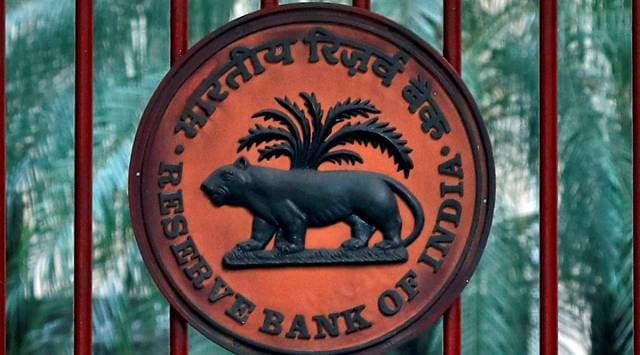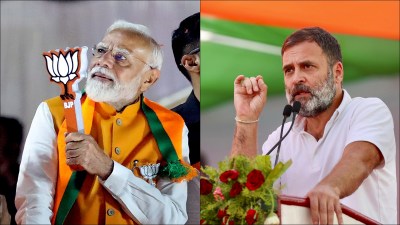- India
- International
Saugata Bhattacharya writes: Is the inflation peak over? RBI’s MPC statement gives a nuanced answer
Even as concerns over inflation persist, future rate hikes will be moderate; the phase of 50 basis points increases is over
 Based on this growth-inflation scenario and the MPC statements, we will probably need to revisit our earlier expectations of the peak (‘terminal’) repo rate of 6.5 per cent in this policy cycle. It might be slightly higher. However, as was emphasised by the RBI, rate hikes, if any, in the future will be moderate; the phase of 50 basis points increase is over.
Based on this growth-inflation scenario and the MPC statements, we will probably need to revisit our earlier expectations of the peak (‘terminal’) repo rate of 6.5 per cent in this policy cycle. It might be slightly higher. However, as was emphasised by the RBI, rate hikes, if any, in the future will be moderate; the phase of 50 basis points increase is over. In line with analysts’ expectations, the Monetary Policy Committee (MPC) voted by a majority 5-1 to increase the policy repo rate by 35 basis points to 6.25 per cent. This marks a shift from the earlier frontloaded rate hikes of 50 bps. The policy stance was retained as remaining “focused on withdrawal of accommodation”, indicating that members continue to attach primacy to moderating inflation.
This policy review was keenly watched for the syntax and the tone of the statement for signals on the extent of further tightening. A terminal (peak) rate of 6.5 per cent for this cycle has been widely expected. But, given the persistence of core inflation (that is, non food and fuel) at around 6 per cent and the continuing momentum in many of its components, will a terminal rate of 6.5 per cent be sufficient? If so, how long will this level need to be retained before headline inflation starts falling towards the target of 4 per cent? The MPC statement needs to be parsed along multiple dimensions to get a sense of the future course of action.
The first is the split among the members regarding the policy action. One, Jayanth Varma, voted “against the repo rate hike”, seeming to imply that he favours holding the rate. At the end-September review, recall that Ashima Goyal had voted for a 35 bps hike as against the majority’s inclination for a 50 bps increase. Now, both Varma and Goyal have voted against the retention of the policy stance, whereas in September, only Varma had voted against it. Hence, the scope of the dissent has slightly broadened.
Second is the important signals embedded in the economic forecasts. The average 2022-23 inflation forecast has been retained at 6.7 per cent, with risks evenly balanced. The growth forecast has been brought down to 6.8 per cent (from 7 per cent earlier) after the second quarter growth print of 6.3 per cent.
Third, and importantly, the language and tone of the statement suggests that further rate actions might be required to get inflation, particularly the sticky core component, durably down to the “tolerance band” (below 6 per cent), even if not the target 4 per cent in the next year. Overall, despite the dissent, the likely implicit thinking of the MPC majority remained more hawkish than expected. For instance, the MPC now adds, to their earlier view of policy tightening required to “keep inflation expectations anchored … and contain second round effects”, the intent to “break core inflation persistence”.

In addition to the rate increases, RBI Governor’s statement noted that while latent system liquidity is still surplus, the RBI would wait for a “sign of a turn in the liquidity cycle” (persistent liquidity shortages) before presumably using measures like bond purchases through Open Market Operations (OMOs) or maybe a CRR (cash reserve ratio) rate cut to inject durable funds. In addition, the statement emphasised that market participants (largely banks) “must wean themselves away from the overhang of liquidity surpluses”, formally encoding verbal indications at previous interactions.
A relative tightness in system liquidity is important both from the point of keeping short-term money market rates closer to the upper band of the policy rate corridor and to moderate speculative positioning in the foreign exchange markets, both of which are important supplements to achieving the “price stability” objective.
In this context, it is worth reiterating the thought process of the retention of stance.
“Accommodative” is defined in relation to conditions prevailing in June 2019 when policy had shifted from a “neutral” to “accommodative” stance, with the repo rate at 5.75 per cent. At that time, inflation was around 3 per cent and forecasted at 3.4-3.7 per cent in the second half of 2019-20. System liquidity was in deficit mode. Now, with inflation at 6.5 per cent plus and liquidity at an average surplus of Rs 1.4 lakh crores in November, a repo rate of 5.9 per cent (till yesterday) is still appreciably accommodative.
What does this imply for monetary policy going forward? Demand remains surprisingly resilient, even after cumulative repo rate hikes of 190 bps since early May (excluding the additional increase of 35 bps now), transmission of which into repo rate linked lending rates has been much swifter than in previous cycles. Manufacturing and services purchasing managers indexes (PMIs) show strong order books. But there are some early signals of a widening “output gap”. The second quarter financial results showed the inability of many corporates to pass on higher input costs to end consumers. And despite the robust 6.3 per cent growth in the second quarter, the underlying measure of economic activity, the gross value added (GVA), grew by only 5.6 per cent.
At the same time, although the peak is past, CPI inflation is likely to remain elevated for the next three to four months, falling below 6 per cent only in March. Core inflation is likely to remain persistently high, averaging 6.1 per cent in the second half of 2022-23. We await the results of RBI surveys including household inflation expectations, capacity utilisation, to get a more nuanced understanding on the future path of inflation.
Based on this growth-inflation scenario and the MPC statements, we will probably need to revisit our earlier expectations of the peak (“terminal”) repo rate of 6.5 per cent in this policy cycle. It might be slightly higher. However, as was emphasised by the RBI, rate hikes, if any, in the future will be moderate; the phase of 50 basis points increase is over. This is in line with most major central banks who are shifting to a more calibrated, data driven pace of tightening. In India’s context, monetary policy, in all its dimensions, needs to be mindful of a potential tipping point with rising borrowing costs and squeezed cash flows, where an exogenous shock might trigger a non-linear, material impact on financial sector stability. The RBI and the MPC have demonstrated their ability to balance multiple objectives. These skills will now be required to engineer a soft landing for the economy.
The writer is executive vice president and chief economist, Axis Bank. Views are personal
EXPRESS OPINION
More Explained
Apr 25: Latest News
- 01
- 02
- 03
- 04
- 05











































